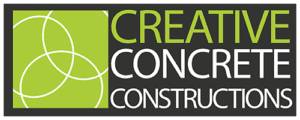Decorative concrete resurfacing for indoor floors and surfaces
Decorative Concrete Resurfacing for Indoor Floors and Surfaces
When people think of concrete, many picture rough driveways or garden paths. But concrete has come a long way—and today, decorative concrete resurfacing for indoor floors and surfaces is making waves in modern interior design. It’s stylish, cost-effective, and incredibly versatile. Whether you’re renovating a home, office or retail space, this technique brings a sleek, contemporary look without the need for expensive materials.
What Is Decorative Concrete Resurfacing?
Decorative concrete resurfacing for indoor floors and surfaces involves applying a specially formulated overlay onto an existing concrete slab. This overlay can be tinted, textured, polished, or patterned to suit your aesthetic. It transforms dull, worn, or uneven concrete into a beautiful, durable surface with minimal mess or downtime.
Why Is It Popular Indoors?
-
Offers a seamless, low-maintenance finish
-
Works with underfloor heating systems
-
Suitable for high-traffic zones like kitchens and hallways
-
Creates a polished or matte look that matches modern interiors
For example, many homeowners in Brisbane are resurfacing concrete slab floors in their open-plan living areas to mimic polished stone—at a fraction of the cost.
Key Benefits of Decorative Concrete Resurfacing for Indoor Floors and Surfaces
This interior design trend is more than just a fad. Let’s explore the main benefits of decorative concrete resurfacing for indoor floors and surfaces.
1. Aesthetic Flexibility
From natural stone patterns to sleek grey micro-toppings, you can customise the finish to suit any style.
-
Polished, matte, or semi-gloss finishes
-
Decorative stencils and scoring options
-
Colour options from earthy tones to bold modern palettes
You’re not stuck with the cold, industrial look anymore. Today’s decorative concrete resurfacing for indoor floors and surfaces is about elegance and personalisation.
2. Cost-Effective Renovation
Tearing out and replacing floors is expensive and time-consuming. Resurfacing saves on both labour and materials.
-
Minimal demolition required
-
Less mess and faster turnaround
-
A durable finish that lasts for years
This makes decorative concrete resurfacing for indoor floors and surfaces an excellent option for budget-conscious renovators or commercial spaces needing a quick update.
3. Durability and Low Maintenance
Concrete overlays are engineered to withstand daily wear and tear.
-
Resistant to stains, scratches, and scuffs
-
Non-porous when sealed—perfect for kitchens and bathrooms
-
Requires only occasional sweeping and mopping
With proper care, decorative concrete resurfacing for indoor floors and surfaces will maintain its fresh look for decades.
4. Eco-Friendly and Sustainable
By resurfacing existing slabs instead of replacing them, you reduce waste and energy use. It’s an environmentally smart choice.
-
No need to dispose of old materials
-
Compatible with low-VOC sealers and eco-conscious finishes
-
Ideal for green building projects or sustainability-minded homes
Common Indoor Applications
Decorative concrete resurfacing for indoor floors and surfaces is suitable for a wide variety of settings:
Ideal Rooms and Spaces
-
Living rooms – Warm, modern aesthetic with optional inlays
-
Kitchens – Easy to clean and resistant to spills
-
Bathrooms – Slip-resistant and moisture-tolerant finishes
-
Offices and retail spaces – Professional, high-end appearance
It’s even used for vertical applications like feature walls, benchtops, and fireplace surrounds.
Tips for a Long-Lasting Finish
To keep your newly resurfaced floors in top shape:
-
Use soft pads under furniture legs
-
Reseal every 3–5 years, depending on traffic
-
Avoid harsh chemicals—stick to pH-neutral cleaners
-
Clean spills promptly to prevent staining
These tips ensure your decorative concrete resurfacing for indoor floors and surfaces stays flawless for years.
Final Thoughts
If you’re looking for a durable, stylish, and affordable flooring solution, decorative concrete resurfacing for indoor floors and surfaces ticks all the boxes. It offers the charm of natural stone, the sleekness of modern design, and the strength of concrete—all without the renovation chaos.
Ready to reinvent your interiors? Contact a decorative concrete specialist today and explore the stunning resurfacing options available for your home or workspace.
